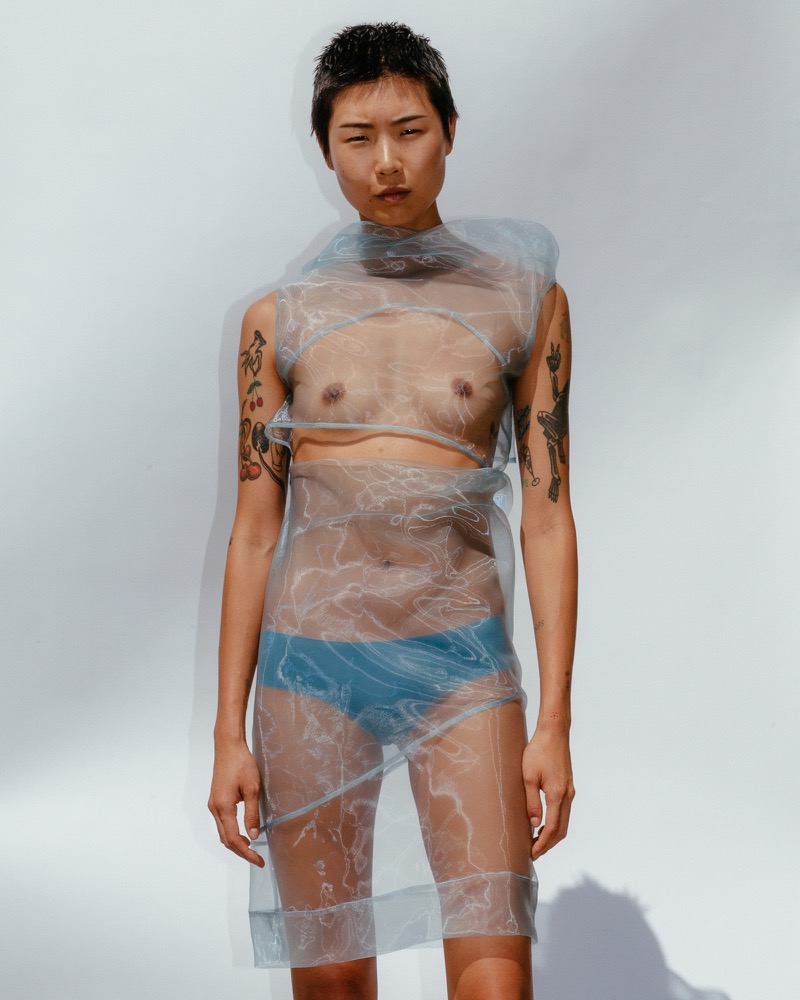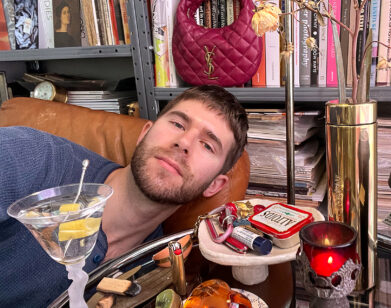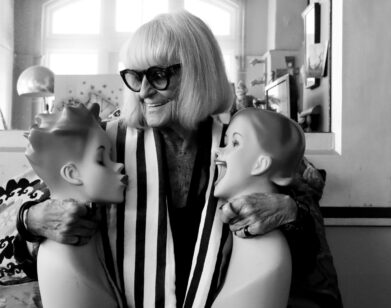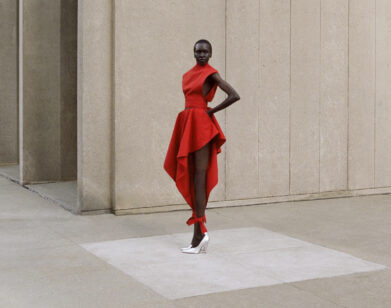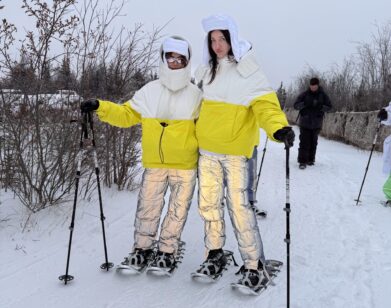Eckhaus Latta redefined the erogenous zone
Pubes washed up from loose-fitting trousers and nipples barely peeked out from just above knitted dresses (when they weren’t wrapped in sheer fabric) at the Eckhaus Latta show this past weekend. Erogenous zones—those sexy areas of the body just below the belly button, just above the buttcrack—were re-explored, re-configured and shown off by artists like India Salvor Menuez, Susan Cianciolo and Jane Moseley. The way Eckhaus Latta does sex, however, is arty. It’s always a composed frame of nudity rather than a shock-and-awe reveal. Just maybe, according to the design duo, the clothes aren’t meant to be sexy at all. It’s the wearer that makes them sexy—and in the case of their latest collection, achingly so. For a brand known more for challenging convention with unlikely silhouettes and not immediately flattering designs, Mike Eckhaus and Zoe Latta are bringing sexy back.
TREY TAYLOR: I want to talk about erogenous zones like the pube area and the butt. What is your obsession with those areas?
ZOE LATTA: That was just a styling choice to put smaller people in bigger jeans.
MIKE ECKHAUS: In general, we love to explore how we personally are really attracted to clothes that we wear every day that are falling apart. But how can you explore that within the construction of a collection so that things aren’t raw-edged or deconstructed?
LATTA: We have no interest in making clothes that are falling apart, but the feeling of wearing something—how much more sexy it is if someone has a t-shirt that’s ripped in the back and you can see their whole back versus some structured thing that frames their whole back. So for us, playing with structure still kind of has that ease to it. We’re also not assuming that everyone will want to expose their happy trail, or have their tits out at a cocktail party, but it’s still an option! And also something that we prefer someone plays with themselves in terms of fitting into their own comfort zone and sexuality. Like how they want to be them.
TAYLOR: Are the clothes made to be sexy?
ECKHAUS: Yes and no.
LATTA: The person brings the sexuality. You could have the hottest person in the world, and if they’re not feeling sexy, it’s not gonna look sexy. You could have a totally unconventionally-shaped person, and if they are feeling it, it works. We didn’t make clothes to be conventionally sexed up. I would say we did cast a pretty sexy cast.
ECKHAUS: We also enjoy that space of not the awkwardness, but the questionability of sex appeal or taste or exposure of flesh, and the conversation of fabric against skin, and what does that mean and how can it be pushed in these different ways.
TAYLOR: It’s amazing how you’ve kept that diverse age range of your cast a focal point of your collections. And them being sexy too!
ECKHAUS: It’s really important. People are not only sexy until they’re 25 or something. You can be sexy at 50, 65, 80 [years old]. It’s always really important for us in the casting. Clothes look good when the person wearing them feels good in them.
LATTA: Also the word sexy might be too specific. Looking good is an internal thing. You can make the best clothes in the world but they could not look good on the wrong person.
ECKHAUS: If Kim Kardashian was having a bad day or something like that.
LATTA: If she was in a mood… Let’s keep her name out of it. She looks pretty good.
ECKHAUS: I think it’s confidence and comfort more than sex appeal. That feeling of when you wake up in the morning and maybe you’re going to work or going to meet up with your friends on a Saturday, go out to a party, and you put this on and you feel good. That feeling is really exciting.

